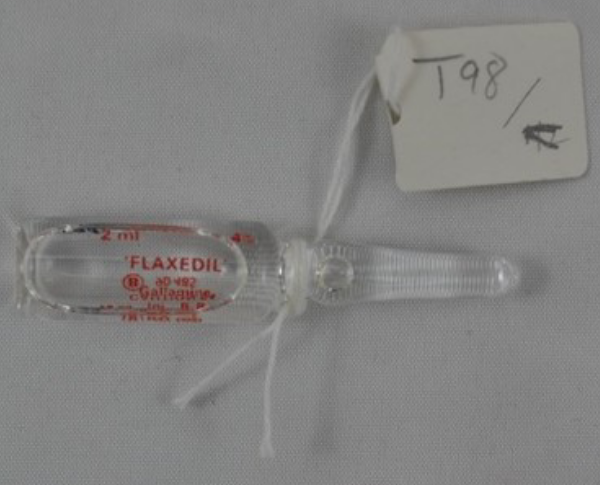Gallamine on:
[Wikipedia]
[Google]
[Amazon]
Gallamine triethiodide (Flaxedil) is a  The pharmaceutical is no longer marketed in the United States, according to the FDA Orange Book.
The pharmaceutical is no longer marketed in the United States, according to the FDA Orange Book.
non-depolarising muscle relaxant
Neuromuscular-blocking drugs block neuromuscular transmission at the neuromuscular junction, causing paralysis of the affected skeletal muscles. This is accomplished via their action on the post-synaptic acetylcholine (Nm) receptors.
In cli ...
. It acts by combining with the cholinergic receptor
An acetylcholine receptor (abbreviated AChR) is an integral membrane protein that responds to the binding of acetylcholine, a neurotransmitter.
Classification
Like other transmembrane receptors, acetylcholine receptors are classified according ...
sites in muscle
Skeletal muscles (commonly referred to as muscles) are organs of the vertebrate muscular system and typically are attached by tendons to bones of a skeleton. The muscle cells of skeletal muscles are much longer than in the other types of mus ...
and competitively blocking the transmitter action of acetylcholine
Acetylcholine (ACh) is an organic chemical that functions in the brain and body of many types of animals (including humans) as a neurotransmitter. Its name is derived from its chemical structure: it is an ester of acetic acid and choline. Par ...
. Gallamine is a non-depolarising type of blocker as it binds to the acetylcholine receptor but does not have the biological activity
In pharmacology, biological activity or pharmacological activity describes the beneficial or adverse effects of a drug on living matter. When a drug is a complex chemical mixture, this activity is exerted by the substance's active ingredient or ...
of acetyl choline. Gallamine triethiodide has a parasympatholytic effect on the cardiac vagus nerve
The vagus nerve, also known as the tenth cranial nerve, cranial nerve X, or simply CN X, is a cranial nerve that interfaces with the parasympathetic control of the heart, lungs, and digestive tract. It comprises two nerves—the left and righ ...
, which causes tachycardia
Tachycardia, also called tachyarrhythmia, is a heart rate that exceeds the normal resting rate. In general, a resting heart rate over 100 beats per minute is accepted as tachycardia in adults. Heart rates above the resting rate may be normal ( ...
and occasionally hypertension
Hypertension (HTN or HT), also known as high blood pressure (HBP), is a long-term medical condition in which the blood pressure in the arteries is persistently elevated. High blood pressure usually does not cause symptoms. Long-term high b ...
. Very high doses cause histamine
Histamine is an organic nitrogenous compound involved in local immune responses, as well as regulating physiological functions in the gut and acting as a neurotransmitter for the brain, spinal cord, and uterus. Since histamine was discover ...
release.
Gallamine triethiodide is commonly used to stabilize muscle contractions during surgical procedures.
It was developed by Daniel Bovet
Daniel Bovet (23 March 1907 – 8 April 1992) was a Swiss-born Italian pharmacologist who won the 1957 Nobel Prize in Physiology or Medicine for his discovery of drugs that block the actions of specific neurotransmitters. He is best known for hi ...
in 1947.
 The pharmaceutical is no longer marketed in the United States, according to the FDA Orange Book.
The pharmaceutical is no longer marketed in the United States, according to the FDA Orange Book.
See also
*Neuromuscular-blocking drug
Neuromuscular-blocking drugs block neuromuscular transmission at the neuromuscular junction, causing paralysis of the affected skeletal muscles. This is accomplished via their action on the post-synaptic acetylcholine (Nm) receptors.
In cli ...
* Curare
Curare ( /kʊˈrɑːri/ or /kjʊˈrɑːri/; ''koo-rah-ree'' or ''kyoo-rah-ree'') is a common name for various alkaloid arrow poisons originating from plant extracts. Used as a paralyzing agent by indigenous peoples in Central and South ...
References
Muscle relaxants Nicotinic antagonists Quaternary ammonium compounds Phenol ethers Neuromuscular blockers {{musculoskeletal-drug-stub